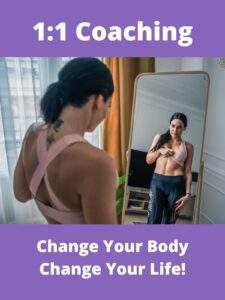Fit 237: Abdominal Exercise Techniques, Food Scales, Identifying Beliefs
How to identify your limiting beliefs, the importance of having a food scale for effective nutrition and why most people are doing abdominal training wrong!
Did you do the poll? Look on the right aide bar on the fitgirlguide.blogspot.com page and give your opinion!
The Food Scale do you have one? Do you use one? I have for along time! Here’s a link to the one similar to the one I use now and love! FYI-Mine is older, this version is much better and less expensive! Why use a Food Scale? Well, not so much to limit what you eat, but to make sure you are getting enough nutrients! Don’t know what a Food Scaleis? It’s an easy way to get an accurate measurement of your food and thus your nutrients [Proteins, Fats, and Carbs]. Most basic scales will give you your food in grams and ounces, use this info with nutritional information and you can be more exact on your calories as well as your Protein, Fat, and Carb intake to make faster progress.
Part 1: Choosing a Food Scale
Here’s a few hints at choosing a scale
- select a scale that has numbers you can easily read
- is within your budget
- has a bowl or cup for holding food or a platform that will hold one
- is easy to maintain
Part 2: How to Use a Food Scale
Helpful hints when using your scale. These may seem obvious to you, but I have had clients skip a few steps and get completely messed up meals!
- Read the manual …seriously! Do it! Zero out your scale.
- Weigh the bowl or container you will use to measure or store the food you’re weighing. Depending on the type of food scale you have, you may You need to know the weight of the container in order to subtract it from the number the scale registers when you add food to it. The answer will give you the actual weight of your food.
- Some scales that come with a “tare” button to zero out when bowl is on platform bf placing food in bowl to measure (My scale has this feature and I love it! Makes life much easier!)
- Place the food portion in the center of the bowl or scale
A Food Scale is a great way to keep yourself honest and your intake accurate. I always find that I overestimate the chicken and under estimate the veggies! A food scale also helps you learn portion control and portion size and keeps you from eating more (or less) than you planned!
From the last episode, did you do your homework? Have you been listening to your thoughts and taking note of negative or non supportive thoughts or self talk? Have you been able to discover any of your limiting beliefs?
There are several other techniques to help you identify your limiting beliefs. I’ll teach you one of them. It’s a simple series of questions.
Method 1 to discover one of your limiting beliefs right now ask yourself:
What is a goal I have? Why haven’t I reached it yet?
Example 1-I need money to start a business but don’t have extra to risk. Now ask yourself the following series of questions.
Question 1. Is this belief true?
Most of the time, your initial thought will be ‘yes – of course it’s true.’
Answer: Yes, I need money to start a business but don’t have extra to risk
Question 2. Is this belief beyond a shadow of a doubt true? Is it possible there is at least one person on the planet that could prove this wrong?
Answer: Yes, there are loads of stories of people who have built businesses entirely from scratch… starting with no money.
Question 3. How does this belief make you feel?
Answer: When I think about this belief, I feel trapped, helpless and sad. I feel like I can’t get anything started because I don’t have any money to risk. And if I risk it and fail, I’ll be in a worse position than before.
Question 4. What is the opposite of this belief?
Answer: I don’t need money to start a business if I am resourceful enough. And actually… not having money forces me to only focus on the high value revenue generating activities. So it forces me to be a better business person when I’m starting.
Question 5. How does that opposite belief make you feel?
Answer: I feel excited, light, and free to move forward again. I feel re-energized and determined to be resourceful and make something happen.
Can you feel the difference in beliefs? One belief will cause you to be stuck, likely procrastinating day in and day out. While the other energizes you to push forward and take action.
Let’s do another example with the same questions, but in regards to weight loss and health.
Example 2 (I hear this alot!!!) -I want to get in shape but no matter what I do (I’ve tried everything) I can’t lose weight.
Now let’s apply the series of questions.
Question 1. Is this belief True?
Question 2. Is this belief beyond a shadow of a doubt true? Is it possible there is at least one person on the planet that could prove this wrong?
Question 3. How does this belief make you feel?
Question 4. What would the opposite of this belief be?
Question 5. How does that opposite belief make you feel?
Along the lines of the “no matter what I do “ is “I’ve tried everything” to lose weight. I get this a lot from everyone ….new clients, to the person I just met! This is a self-fulfilling prophecy because you are essentially waving the white flag before you even allow yourself to succeed. Many people talk about the fear of failure but the fear of success is just as limiting, if not more.
Here’s how the conversation usually goes:
“You’ve tried everything?” I ask.
“Everything,” they reply.
“What were the last hundred things you tried?” I ask.
“Well,” they admit, “I haven’t actually tried a hundred things.”
“Ok, then what were the last twenty-five things you did?”
“I haven’t tried twenty-five things, really, either,” they say.
“So how many things have you actually tried?”
“Well, maybe five or six.”
Aha! The limiting belief tells them to not try. This is also call globalizing. Details on that are in the Mindset Makeover book. When it comes to being healthy and fit, there’s an abundance of limiting beliefs that keep people from ever reaching their goals! I’ve heard them all, and I understand them.
The above conversation covered the first two questions:
1. Is this belief True? No, she hadn’t tried everything
2. Is this belief beyond a shadow of a doubt true? Again, No, she hadn’t tried everything Is it possible there is at least one person on the planet that could prove this wrong? Yes, many have used more than 5-6 techniques before getting the weight off.
3. How does this belief make you feel? When I think about this belief, I feel trapped, helpless and sad. I feel like I can’t lose any weight because I don’t have success when I try. And if I risk it and fail, I’ll be in a worse position mentally and physically than before.
4. What would the opposite of this belief be?
Answer : I can give my full effort to following an exercise and healthy eating plan that is successful. Many other people have succeeded and I can too!
5. How does that opposite belief make you feel?
Answer: I feel empowered, strong, excited, and able to focus on my goal. I feel re-energized [about my goal] and determined to be resourceful and make it happen.
Yes it takes some serious deep thought and introspection to do these limiting belief exercises. It’s well worth the few minutes that it takes to get a lifetime of corrected thinking. If you have trouble working through these, get the help of a friend. Likely they too have some limiting belief that they need to uncover. The support and insight will help both of you. Of course you can also schedule a Power Makeover session with me to get on track even faster, visit CoachKira.com.
TRAINING
Now that we’ve dispelled several popular myths and clarified some important issues about abdominal exercises, let’s verify some of the most effective means of training these muscles. Perhaps one of the most common and important questions asked about abdominal training is
“How high up should you go in a crunch?”
Research* suggests that the abdominals flex the spinal column for about the first 30 to 45 degrees of movement which is approximately equivalent to lifting your shoulder blades off the ground. Beyond 30 degrees, the powerful hip flexors begin to take charge of the movement. Also discovered in research is that bent knee, feet supported sit-ups may cause lumbar stress which could lead to harmful effects on the lumbar discs.
Several studies** indicate that supine crunches, with bent knees and unsupported legs, maximize abdominal activity and minimize hip flexor activity Since the effectiveness of the abdominal exercises is within this small range of motion (30 – 45 degrees), more repetitions and exercises may have to be performed to appropriately challenge these muscles.
Should I “suck in or pull in the abdominals when doing crunches? The rectus abdominis is actually slightly rounded in its relaxed state. The effectiveness of the abdominal exercises is within this small range of motion (30 – 45 degrees), more repetitions and exercises may have to be performed to appropriately challenge these muscles.
Should I “suck in or pull in the in while in a supine position with bent knees, may be an effective means of helping to bring your rib cage and pelvis towards one another, maximizing the effect of the crunch.
I usually tell my clients to visualize your abdominals like an accordion. Pulling the abdominals in (belly button pressed into the spine) also helps some people flatten their lower back against the floor.
Breathing: Exhale during the lifting phase, as this aids the contraction of the abdominals. Research*** has shown, there is increased muscle EMG activity in the abdominal muscles with more pronounced exhalations.
Resistance and abdominal training.
The most important thing is to make sure you are doing your abdominal exercises with correct form. Always focus on body position and movement proficiency. Do the exercises slowly, with control. Focus more on the abdominal movement, trying to accentuate each contraction. In other words, “make every repetition count.” Try adding light weights (2 to 4 lb)only when you feel you really need that additional challenge.
*(Laban, Raptou, & Johnson, 1965; Plowman, 1992; Rasch & Burke, 1978; Ricci, Marchetti, & Figura, 1981).
**(Godgrey, Kindig, & Windell, 1977; Guimaraes et al., 1991; Libetz & Gutin, 1970; Walters & Partridge, 1957).
***(Partridge & Walters, 1959)

Get all the most recent episodes on iTunes or download this episode here:
Fit 237: Abdominal Exercise Techniques, Food Scales, Identifying Beliefs
Now available in paperback: “Mindset Makeover,” available at The Book Patch.com.













